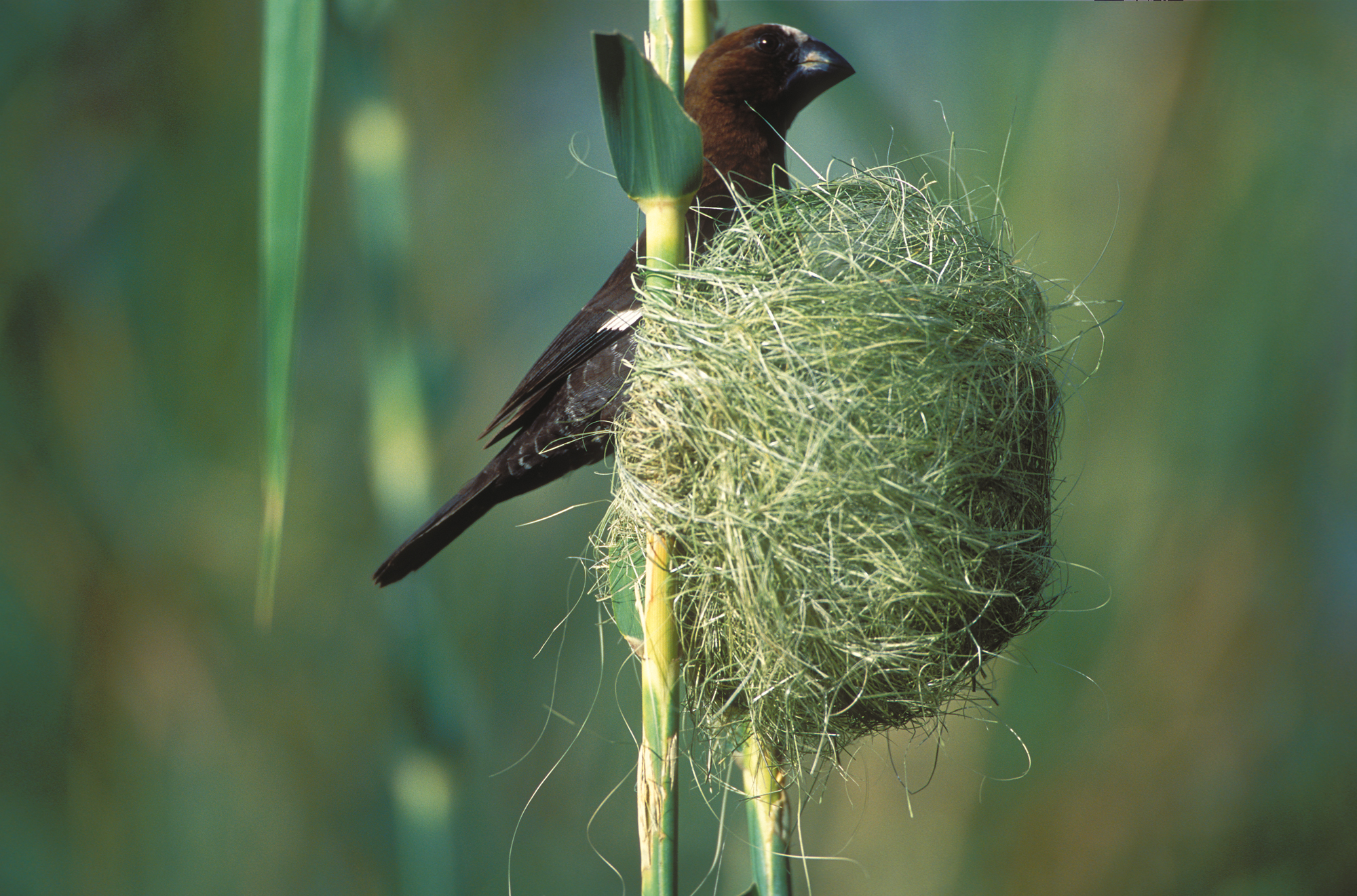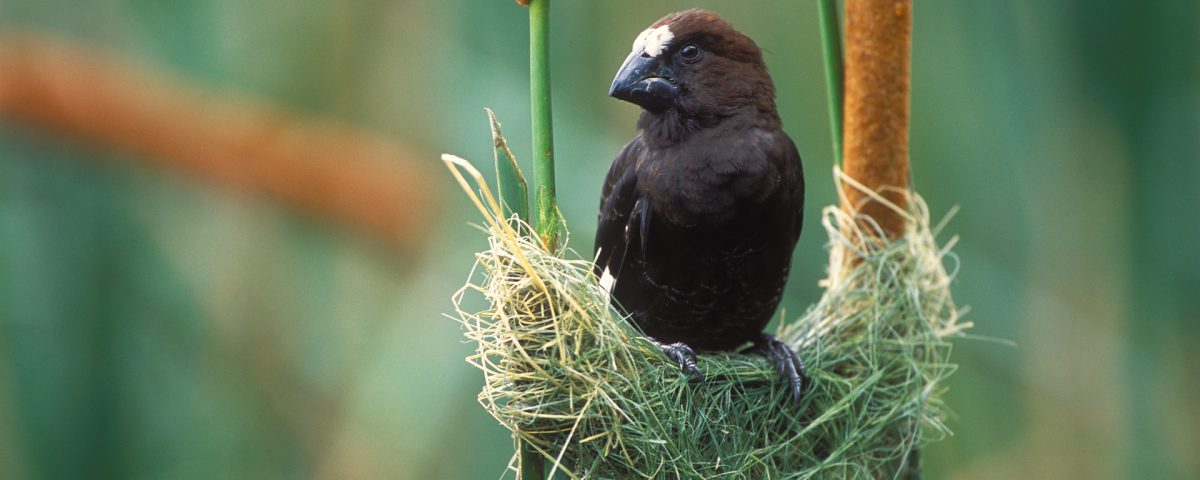
The DIY Safari
August 19, 2016
KLM Royal Dutch Airlines now include flights to Namibia
August 23, 2016Text and Photos by Pompie Burger
| This article was first published in the Flamingo November 2008 issue.
T hese master builders live in northern Namibia from Rundu in the west to the Zambezi Region in the east around marshes, rivers and dams with thick grass and reed beds and papyrus (Cyperus papyrus). When breeding during the non-breeding season, they prefer evergreen forests. The Thick-billed Weaver (Amblyospiza albifrons) is polygamous, although some female birds fail to attract more than one male. This sequence was photographed in Katima Mulilo.
The male is the builder of the nest, while the female does the interior decorating, although we saw a female actually helping the male with the outside finishing touches. Maybe she was in a hurry to start her family.
It takes between one to ten days to finish a nest. You can surely call this little weaver ambidextrous, or even ‘ambihexarous’, because in the process of building he used both feet, both wings, tail and bill to tie all the loose ends together.
The nest is built mostly between three upright stems of bulrush, Phlegmites, or papyrus. The most difficult part of the exercise is to do exactly this. It was a real drama, as the male took about three hours to tie the three stems together successfully, with many unsuccessful attempts and much effort in the process. If you could read frustration on a bird’s face, I am sure I saw it in this male’s expression.
Once the ‘foundation’ – tying the three stems together – is laid, a cup is built from where the nest is constructed upwards. The Ploceus weavers on the other hand start their nest from a ring.
The male sometimes brings several pieces of building material in his bill to the nest at the same time.
While Thick-billed Weavers usually nest in colonies, we’ve seen solitary nests at Shamvura. The reed beds are usually shared with other breeding weavers, such as the Village Weavers (Ploceus cucullatus).
The final result probably compares favourably with the best any professional weaver can offer.







